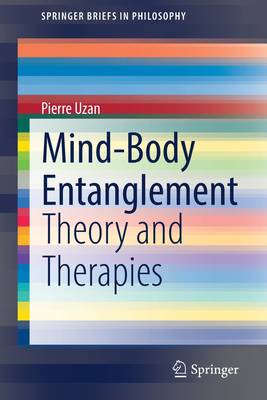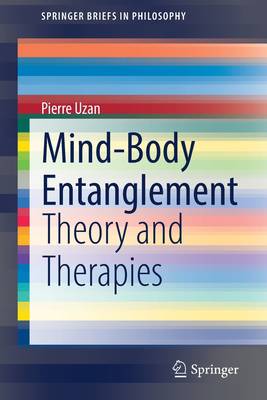
- Retrait gratuit dans votre magasin Club
- 7.000.000 titres dans notre catalogue
- Payer en toute sécurité
- Toujours un magasin près de chez vous
- Retrait gratuit dans votre magasin Club
- 7.000.0000 titres dans notre catalogue
- Payer en toute sécurité
- Toujours un magasin près de chez vous
Description
Introduction Chapter 1. Mind-body connection and causation1.1. About psychophysical correlations 1.2. Which concept of "causation" are we referring to?1.3. Dualism and causal efficacy- Dualism of substances: elusive psychophysical "interactions"- Non-reductive physicalism: logical inconsistency of psychophysical causation1.4. The hopeless attempts to build a concept of mental causation- Woodward's interventionist account of causation and mental causation- The counterfactual account of causation and mental causation1.5. Reductionist Physicalism
Chapter 2. Exploring neutral monism philosophy 2.1. Spinoza's psychophysical parallelism 2.2. Neutral monism and individual experience2.3. Jung and Pauli: Unus Mundus and archetypes2.4. Quantum-like Neutral Monism- Bohm and Hiley: the implicate order theory- Atmanspacher and Primas: symmetry breaking and co-emergence of the psychic and physical aspects of the psychophysical unity- Time entanglement of mind and matter?
Chapter 3. Mind-body entanglement3.1. The psychosomatic unity of the individual3.2. Mind-Body interdependence: the case of emotions3.3. Specificity (or meaningfulness) of the psychophysical correlations3.4. Mind-body entanglement and psychosomatic unity- Which systemic approach for dealing with the mind-body interdependence? - Mind-body entanglement, condition of possibility of the psychosomatic unity
Chapter 4. A quantum-like representation of the psychosomatic unity4.1. Quantum-like representation of psychosomatic states4.2. Complementarity in quantum physics and beyond4.3. Quantum-like representation of mind-body entanglement4.4. An experimental test of mind-body entanglement
Chapter 5. Mind-body entanglement and healing5.1. From biomedicine to the holistic mind-body approach to illness5.2. Body memory, internal diseases and complementary medicines5.3. Self-healing technics: placebo "effect", biofeedback and mental imagery, meditation5.4. Psychiatric disorders5.5. Distant healing
Conclusion
Appendix 1: About the mathematical formalism of quantum theoryAppendix 2: Complementarity of anger and disgustAppendix 3: Complementarity of systolic pressure and stroke volumeAppendix 4: Joint measurement of emotional and cardiovascular observablesAppendix 5: A quantum-like model of bipolar disorder
Chapter 2. Exploring neutral monism philosophy 2.1. Spinoza's psychophysical parallelism 2.2. Neutral monism and individual experience2.3. Jung and Pauli: Unus Mundus and archetypes2.4. Quantum-like Neutral Monism- Bohm and Hiley: the implicate order theory- Atmanspacher and Primas: symmetry breaking and co-emergence of the psychic and physical aspects of the psychophysical unity- Time entanglement of mind and matter?
Chapter 3. Mind-body entanglement3.1. The psychosomatic unity of the individual3.2. Mind-Body interdependence: the case of emotions3.3. Specificity (or meaningfulness) of the psychophysical correlations3.4. Mind-body entanglement and psychosomatic unity- Which systemic approach for dealing with the mind-body interdependence? - Mind-body entanglement, condition of possibility of the psychosomatic unity
Chapter 4. A quantum-like representation of the psychosomatic unity4.1. Quantum-like representation of psychosomatic states4.2. Complementarity in quantum physics and beyond4.3. Quantum-like representation of mind-body entanglement4.4. An experimental test of mind-body entanglement
Chapter 5. Mind-body entanglement and healing5.1. From biomedicine to the holistic mind-body approach to illness5.2. Body memory, internal diseases and complementary medicines5.3. Self-healing technics: placebo "effect", biofeedback and mental imagery, meditation5.4. Psychiatric disorders5.5. Distant healing
Conclusion
Appendix 1: About the mathematical formalism of quantum theoryAppendix 2: Complementarity of anger and disgustAppendix 3: Complementarity of systolic pressure and stroke volumeAppendix 4: Joint measurement of emotional and cardiovascular observablesAppendix 5: A quantum-like model of bipolar disorder
Spécifications
Parties prenantes
- Auteur(s) :
- Editeur:
Contenu
- Nombre de pages :
- 148
- Langue:
- Anglais
- Collection :
Caractéristiques
- EAN:
- 9783030901721
- Date de parution :
- 17-12-21
- Format:
- Livre broché
- Format numérique:
- Trade paperback (VS)
- Dimensions :
- 156 mm x 234 mm
- Poids :
- 244 g

Les avis
Nous publions uniquement les avis qui respectent les conditions requises. Consultez nos conditions pour les avis.






